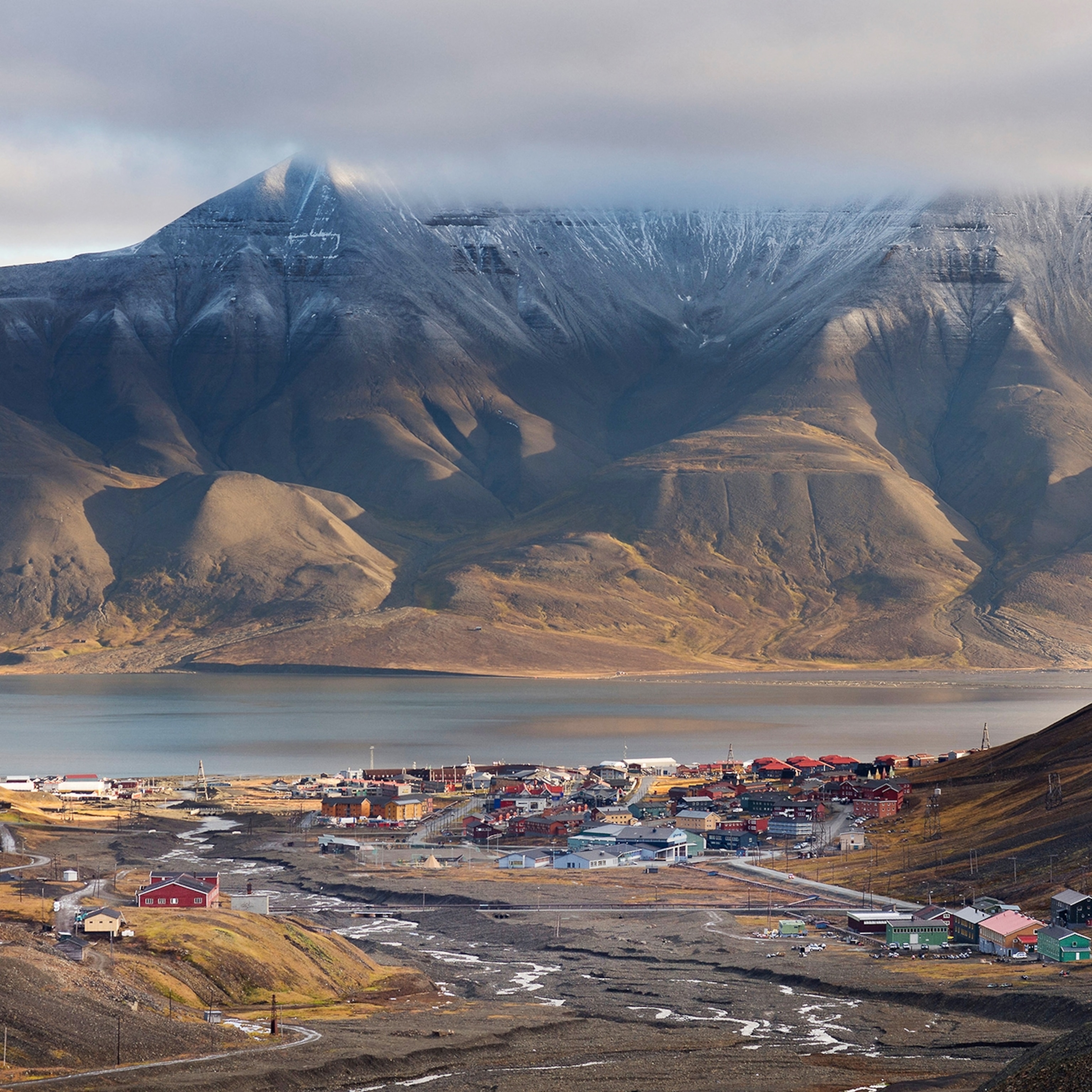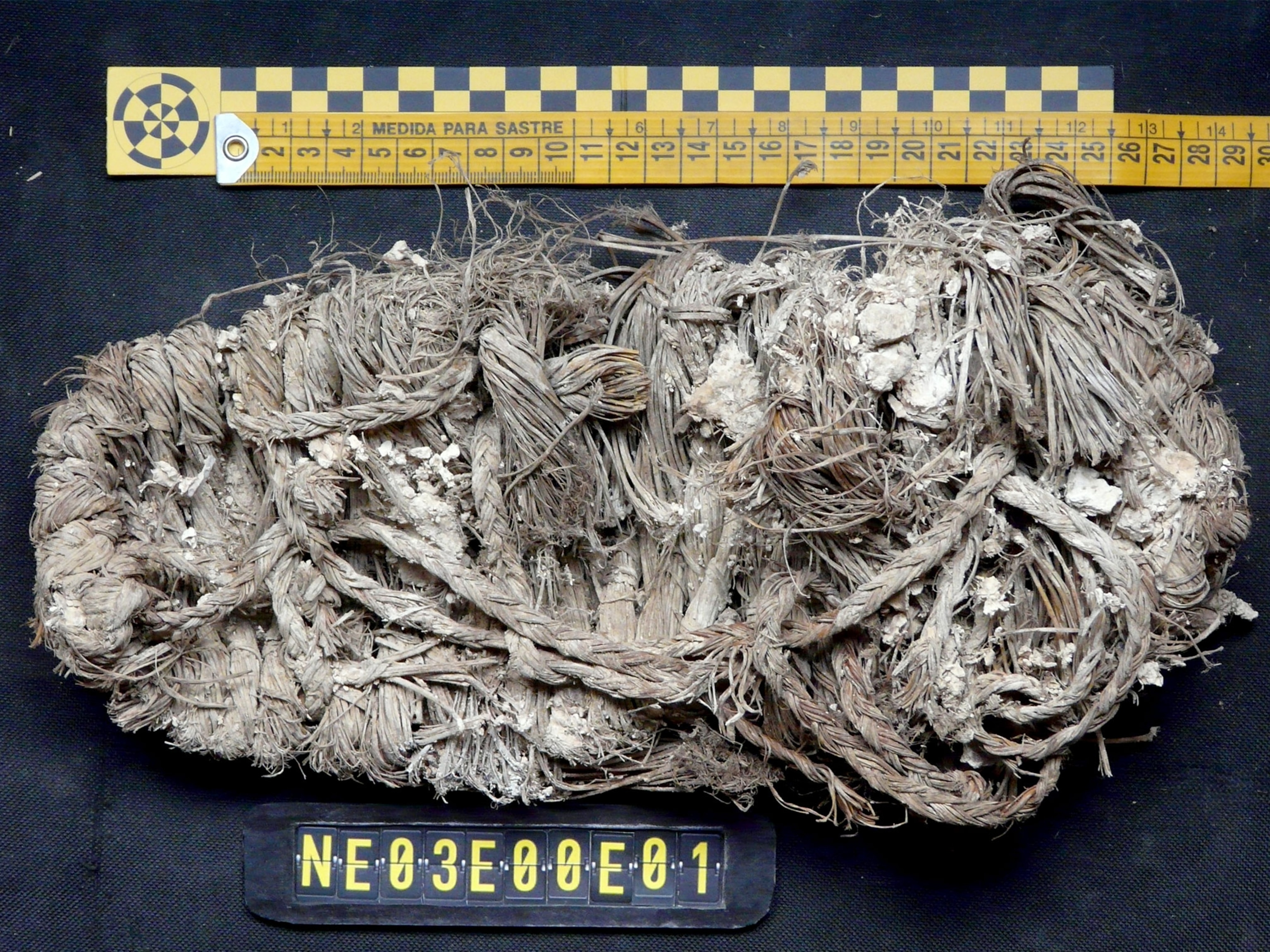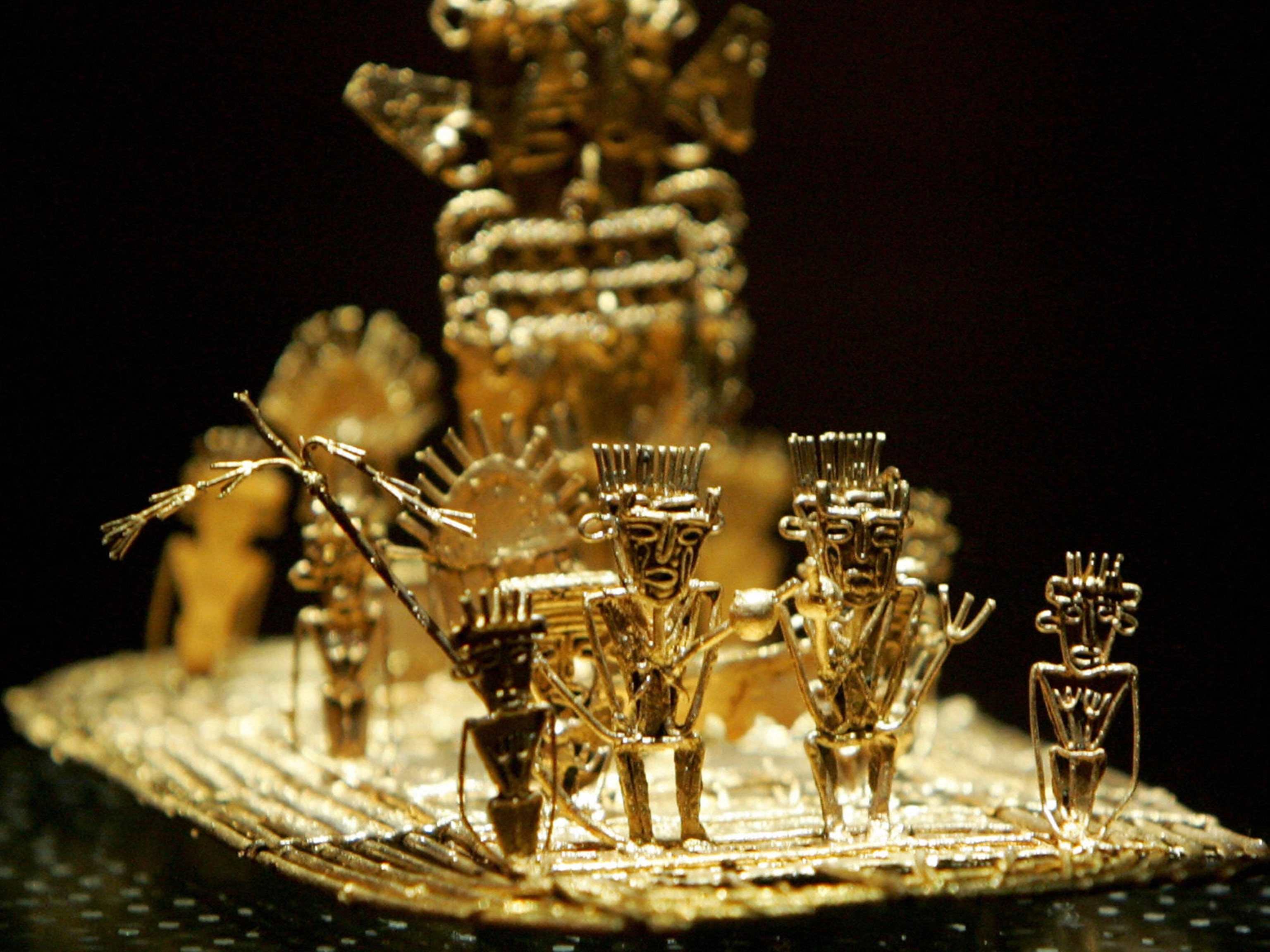
Darwin's first—and only—trip around the world began a scientific revolution
The plants and animals encountered on the five-year voyage of the 'Beagle' provided the foundation for Charles Darwin's theory of evolution.
During August 1831 Charles Darwin, recently graduated from the University of Cambridge, was stuck at home on exactly the same principle, he complained, as a person would choose to remain in a debtors’ prison. At age 22, Darwin was fascinated by the natural world and inspired by the adventure stories of the German naturalist Alexander von Humboldt, whose travels across Central and South America in the early 1800s was the basis of a series of extensive travelogues. Darwin was desperate to undertake a similar scientific odyssey. An attempt to organize an expedition to Tenerife in the Canary Islands off the coast of northwest Africa, had fallen through.
(Darwin, Linnaeus, and One Sleepy Guy)

The awful necessity of earning his own living, probably as the vicar of a country parish, seemed inescapable. And then a letter arrived offering Darwin an amazing opportunity. The writer was one of Darwin’s former teachers, John Stevens Henslow, professor of botany at Cambridge. Henslow informed Darwin that he had recommended him to accompany Captain Robert FitzRoy on an expedition aboard the H.M.S. Beagle. He wrote: “I state this not on the supposition of yr. being a finished Naturalist, but as amply qualified for collecting, observing, & noting any thing worthy . . . in Natural History.”
Robert FitzRoy was an aristocratic but mercurial naval captain. In 1826 he had set off as a crew member on the Beagle to carry out a survey of South America. In the course of the voyage, he was placed in command of the expedition, from which he returned in 1830. The letter from Henslow to Darwin was written as FitzRoy was under instructions from the Admiralty to mount a second survey expedition to Tierra del Fuego, an archipelago at the tip of South America. The primary motive of the voyage was to chart the coast of South America. A secondary motive was scientific exploration. FitzRoy wanted a naturalist aboard, both to carry out scientific work and to keep him company.

Despite Henslow’s recommendation, however, Darwin’s place was not immediately assured. FitzRoy’s first impression of the young naturalist was not entirely favorable. Darwin’s father expressed skepticism at the expense and dangerous nature of the venture. The Beagle was the overcrowded home to a total crew of 74. Shipwreck was a common hazard, death through disease an even greater one, and much of South America was lawless. To try to convince his father, Darwin sought help from his mother’s brother, the industrialist Josiah Wedgwood II. Wedgwood’s daughter Emma had been a childhood friend of Darwin’s, and the two first cousins would later marry, in 1839.

Setting sail
In the end both FitzRoy and his father were persuaded that he should go, and on December 27, 1831, the Beagle sailed out of Plymouth with Darwin on board. Originally planned for two years, the voyage stretched to five, and took Darwin not only to South America but to Tahiti, Australia, New Zealand, Africa, and many of the Atlantic and Pacific islands in between. Darwin often left the ship to travel hundreds of miles on horseback.
Life aboard the Beagle

First launched in 1820, the Beagle started life as a brig (a swift two-masted vessel), 90 feet long and 25 feet wide. It was reconditioned as a three-masted bark in 1825, and later set off to South America under the command of Pringle Stokes. Stokes died during the mission, and Robert FitzRoy took command. On the Beagle’s return in 1830, it was remodeled again for a second surveying expedition in which Darwin would participate (1831-36); the route would take the Beagle to South America and then make a circumnavigation of the globe.
The 74-person crew for this second voyage consisted of officers, midshipmen, sailors and porters, and marines, who all formed the naval crew; in addition, there were nine noncommissioned members, including Darwin. It was a large crew for a ship of such modest dimensions, as Darwin wrote: “The vessel is a very small one . . . but every body says it is the best sort for our work . . . The want of room is very bad, but we must make the best of it.”
Darwin spent most of his time in the stern where Captain FitzRoy’s cabin was located. Darwin’s cabin was outfitted with a folding bunk and bookshelves. He also had a chest in which to store the samples collected ashore. Darwin soon felt at ease on the Beagle. He wrote in February 1832: “I find to my great surprise that a ship is singularly comfortable for all sorts of work. Everything is so close at hand, & being cramped, make one so methodical, that in the end I have been a gainer. I already have got to look at going to sea as a regular quiet place, like going back to home after staying away from it.”
In the course of this extraordinary journey, he filled notebook after notebook with sketches and observations. Darwin shipped home barrels, boxes, and bottles by the dozen, filled with pressed plants, fossils, rocks, skins, and skeletons. He explored landscapes that ranged from the gray desolation of the Falklands to the glorious heights of the Andes, from the wild glaciated cliffs of the Beagle Channel to the beaches of Tahiti, from the tropical lushness of Rio to the dripping rainforest of southern Chile.
Early observations
First landfall was the volcanic island of St. Jago (now Santiago) in the Cape Verde Islands. After three weeks of seasickness, Darwin threw himself enthusiastically into his first independent fieldwork, identifying rock samples and recording a cross section of the volcanic strata. He had the best equipment he could buy: a microscope, a clinometer for measuring angles, geological hammers, and a vasculum (a container for botanical specimens), but he was still a novice. He boasted in a letter to his Cambridge teacher, John Stevens Henslow, that his discovery of a color-changing octopus “appears to be new.” It wasn’t, and Henslow gently disabused him. (Here's how animals are able to manipulate their color.)

By February 15, 1832, they were resupplying on the remote rocky islets of St. Paul’s, and two weeks later, the Beagle crossed the Equator and reached the coast of Brazil. Darwin, however, injured in the final leg of the journey, was forced to stay on board, so it was April before he first set foot in South America, at Botafogo Bay near Rio de Janeiro.
For the next few months as the crew of the Beagle sailed up and down the coast checking and rechecking naval charts, Darwin stayed ashore, happily exploring the Corcovado mountains near Rio, shifting from geology to zoology and building an impressive collection of spiders and wasps.
A man of letters

During the Beagle’s voyage, Darwin famously amassed a huge scientific collection of plants and animals, but another important legacy is his prolific and detailed correspondence with family and friends. The letters reflect Darwin’s mood over the five years of the voyage and—despite the ups and downs—suggest he was never disheartened. His words to his loved ones also expose the man behind the scientist. His humanity and personality quirks are on full display—from delighting in his private cabin on the ship to asking his sisters to mail him more “Prometheans,” or matches.
The ship went south again at the end of June. This time he went, too, encountering porpoises, whales, penguins, and seals. The expedition dropped anchor at the end of July at the mouth of the majestic Río de la Plata. Both Montevideo on the north bank, where they helped put down a revolt, and Buenos Aires on the south bank, where they were fired on as suspected cholera-carriers, were dangerous places. The flat and empty landscape seemed to Darwin a poor exchange for the lushness of the tropics. (Related: The tropics are home to 80 percent of the world's species, but they're losing wildlife fast.)
Moldy mice
All the while, Darwin’s collections were annoying the ship’s purser who complained about the clutter. Darwin had already learned some taxidermy, and now experimented with other ways of preserving unfamiliar specimens using wax, spirits, and thin sheets of lead—with mixed results. (See how one museum moved hundreds of taxidermy animals.)
Darwin's birds
The first letters from home brought criticism and advice from Henslow, on whose doorstep Darwin’s treasures were landing. It is another reminder of how Darwin's voyage was a learning experience: His labels weren’t securely fixed, beetles had been crushed, mice had gone moldy, and one mystery bottle looked like “the remains of an electric explosion, a mere mass of soot.”
By September 1832 they were surveying the coast of Argentina. Already a good shot, Darwin learned to use a bola (a weighted lasso) to bring down ostriches and took time off from “admiring the Spanish ladies” to discover his first large fossilized vertebrate—a Megatherium, an extinct species of giant ground sloth. Darwin’s curiosity was piqued by its similarity to a species of agouti, a rodent native to South America. In November he returned to Buenos Aires to restock for the voyage to Cape Horn.

A year after leaving home, the Beagle, like the Endeavour of Captain Cook and Joseph Banks before it, finally anchored in the Bay of Good Success on the coast of Tierra del Fuego. It was magnificent but inhospitable country. They spent Christmas on Hermit Island, just west of the cape, but were repeatedly beaten back by gales. One of their whaleboats was smashed against the ship in a storm, and Darwin lost notes and specimens.
After arriving at Ponsonby Sound, FitzRoy and some of the crew, including Darwin, headed off in two of the ship’s boats on a 300-mile round trip to chart the farther reaches of the Beagle Channel, named for FitzRoy’s first adventures there. It was spectacular country. Darwin’s letters home glitter with descriptions of the glaciers’ beauty. But they were dangerous as well: When a large sheet of ice crashed into the water sending a surge along the shore toward their boats, it was Darwin who led the desperate race to drag them to safety. FitzRoy named the place Darwin Sound in his honor.
Reptilian relationships

On April 18, 1835 Darwin wrote a long letter from Valparaíso (Chile) to his friend and former teacher, the botanist and geologist John Stevens Henslow. He described the local lizards and invited his colleagues’ opinions. Darwin's methodical approach to research and his generosity and openness to academic cooperation is on full display: “I also send a small bottle with 2 Lizards: one of them is Viviparous, as you will see by the accompanying notice.” Darwin had heard of a French scholar who had found a similar lizard, so he urged his friend to “hand over the Specimens to some good Lizardologist & Comparative Anatomist to publish an account of their internal structure.”
Foiled in their attempt to round the cape, they sailed east and on March 1, 1833, arrived at the Falkland Islands where the navy was keen to discover safe harbors. Concerned that the Beagle crew alone could not complete their mission, FitzRoy bought another boat: the Adventure. Both ships returned in April to Montevideo, where Darwin set off on his first long inland expedition, accompanied by the Beagle’s cabin boy, Syms Covington, whom Darwin had hired as combined servant and research assistant. They did not rendezvous with the ship until September, in Buenos Aires.
Rounding the Cape
Both the Beagle and the Adventure headed south in December, retracing the route of the previous year as far as Tierra del Fuego. There, Darwin finally found something he had been looking for: a new species of rhea (originally named Rhea darwinii), an ostrich-like bird—but only after half of it had been eaten for the crew’s dinner.
By March 1834 they were once again forced to head back to the Falklands without rounding the cape. The Beagle’s keel had been badly damaged, so by the middle of April it was beached at the mouth of the Rio Santa Cruz for repairs. FitzRoy took advantage of the opportunity to mount an expedition upriver. They rowed and dragged the boats 140 miles through uncharted territory. It took three weeks to go up and three days to sail back down, Darwin all the while was adding to his observations. (These scientists spent months exploring the Okavango delta.)
Darwin's fossils
After the Beagle was repaired, it made a third attempt to round the cape. Perhaps the third time was the charm, because this time they made it. In June 1834 the expedition finally reached the west coast of South America.
The next year was spent following the coastline of Chile and Peru in much the same manner as the previous two and a half years had been spent in Brazil, Uruguay, and Argentina: The Beagle followed a switchback course, surveying and resurveying the complex archipelago of the coastline.
Darwin loathed the incessantly dripping and impenetrable temperate rainforest of southern Chile, and was frequently absent organizing his own inland expeditions. He traveled southeast through the Andes from the colonial elegance of Valparaíso to Santiago. It was largely uncharted, so he relied on the help of locals who drew maps, advised on safe routes, and helped hire guides and horses. One looked after him for several weeks when he fell dangerously ill, probably with typhoid fever. Meanwhile FitzRoy felt isolated, overworked, and depressed. The Admiralty’s unwillingness to shoulder the cost of the Adventure forced him to sell the ship, after which he threatened to resign. The future of the voyage hung in the balance.

Darwin made one more major land expedition, traveling 220 miles from Valparaíso through the Andes to Coquimbo and Copiapó, before rejoining the Beagle to sail to Iquique in Peru. From Lima they sailed west at the end of July 1835 and arrived at the Galápagos archipelago in mid-September.
They spent five weeks exploring the islands, each with its own distinctive flora and fauna. Darwin, still months from forming even a rudimentary theory on how species might evolve over time, filed new facts away with each species he came across. Although the Galápagos, and their finches and great tortoises are closely connected in the popular imagination with the origins of his ideas about species change, Darwin did not conceive of his famous hypothesis on that visit. (Turns out Galápagos tortoises migrate—just very slowly.)

Darwin’s observations on this trip led to a different grand, scientific theory. In the Andes, in the Uspallata Pass, he had noticed something curious: fossilized trees that he realized must once have been submerged in the sea. The question in Darwin’s mind was how had they been raised so high up in the mountains.
On January 19, 1835, while Darwin was exploring inland, the Beagle crew had witnessed the eruption of the Osorno Volcano in Chile. A month later, farther up the coast, an earthquake struck and caused a tidal wave. Darwin began to speculate that the events might be connected. FitzRoy reviewed earlier soundings and confirmed the height of the land had changed. Armed with this information, Darwin proposed a theory of continental-scale fall and uplift, with tiny changes working over eons to create dramatic landscapes like those in the Andes.

With this in mind, when they arrived in Tahiti and Darwin saw his first coral reef, he proposed a brilliant new solution to the mystery of how such reefs were formed. His letters describing his ideas were, unbeknownst to him, appearing in scientific journals, and he would return with an already established scientific reputation. But he wasn’t home yet. As they sailed west from the coast of Africa, FitzRoy had found errors in the very first charts they had made, and diverted across the Atlantic to resurvey the coast of Brazil.
The Beagle finally docked at Falmouth on October 2, 1836. Darwin never left Britain again, but he maintained a robust correspondence with his colleagues all over the world about the work done on the voyage. He went on to publish more than 20 articles from his notes and diaries written aboard the Beagle. He published books, became a best-selling travel writer, and a leading scientist.
Evolution of a theory

It is likely that during his trip aboard the Beagle Darwin may have already been beginning to sketch a first outline of his theory of evolution. Immediately after returning to London, he began to work on the theory in earnest, albeit secretly, in his private notebooks. He drafted a first brief treatise that he kept hidden for fear of the scandal it would provoke. As early as 1837 (a year after his return on the Bea- gle), he drew a “tree of life” to illustrate the evolution—or “transmutation” as he then termed it—of species. It was not until 1859 that Darwin published the final version of his theory, spurred to do so by the publication of similar ideas by the English naturalist Alfred Russel Wallace.
The work of identifying hundreds of specimens was parceled out to others, many of whom became lifelong friends and colleagues. Although not conceived during the voyage, Darwin’s ideas about species change were born not only out of his encounters with so many different plants and animals (including humans), but, most importantly, through the opportunity to see them in all the complexity of their shared habitats. Many years later, Darwin had no hesitation in declaring the voyage of the Beagle the single most important event of his life.















